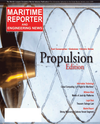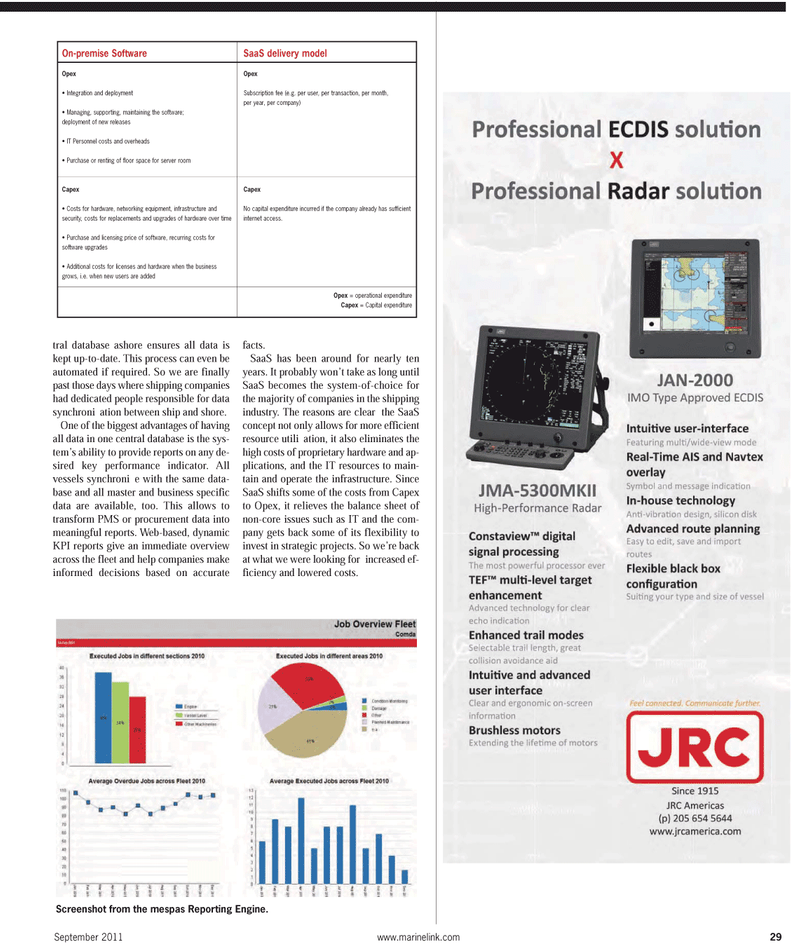
Page 29: of Maritime Reporter Magazine (September 2011)
Marine Propulsion Annual
Read this page in Pdf, Flash or Html5 edition of September 2011 Maritime Reporter Magazine
September 2011www.marinelink.com 29tral database ashore ensures all data iskept up-to-date. This process can even be automated if required. So we are finally past those days where shipping companieshad dedicated people responsible for datasynchroniation between ship and shore. One of the biggest advantages of having all data in one central database is the sys-tem?s ability to provide reports on any de- sired key performance indicator. All vessels synchronie with the same data- base and all master and business specific data are available, too. This allows to transform PMS or procurement data intomeaningful reports. Web-based, dynamic KPI reports give an immediate overview across the fleet and help companies make informed decisions based on accuratefacts. SaaS has been around for nearly tenyears. It probably won?t take as long until SaaS becomes the system-of-choice forthe majority of companies in the shippingindustry. The reasons are clear the SaaS concept not only allows for more efficient resource utiliation, it also eliminates the high costs of proprietary hardware and ap- plications, and the IT resources to main-tain and operate the infrastructure. SinceSaaS shifts some of the costs from Capex to Opex, it relieves the balance sheet of non-core issues such as IT and the com-pany gets back some of its flexibility to invest in strategic projects. So we?re back at what we were looking for increased ef- ficiency and lowered costs. Screenshot from the mespas Reporting Engine. On-premise Software SaaS delivery model OpexOpex ? Integration and deployment Subscription fee (e.g. per user, per transaction, per month, per year, per company) ? Managing, supporting, maintaining the software; deployment of new releases ? IT Personnel costs and overheads? Purchase or renting of floor space for server room CapexCapex ? Costs for hardware, networking equipment, infrastructure and No capital expenditure incurred if the company already has suffi cient security, costs for replacements and upgrades of hardware over timeinternet access. ? Purchase and licensing price of software, recurring costs for software upgrades ? Additional costs for licenses and hardware when the business grows, i.e. when new users are added Opex= operational expenditure Capex= Capital expenditure

 28
28

 30
30
